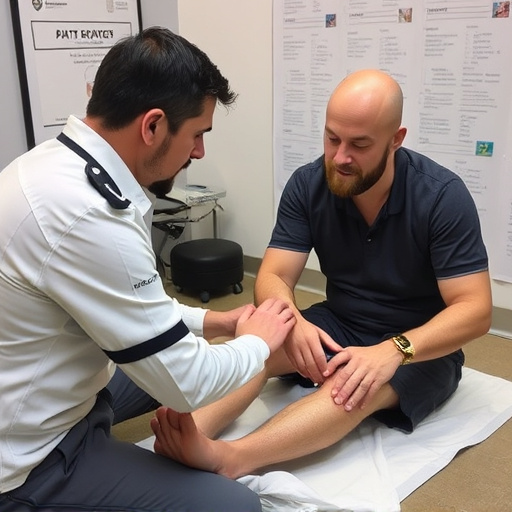Federal employee injury care involves immediate reporting, accurate form completion (like SF-370), and timely medical documentation. Effective communication navigates claims, ensures benefits, and provides access to tailored care like rehab for conditions like neck pain or pinched nerves. Structured tracking and record management enhance processing efficiency, facilitating swift wellness care and appropriate rehabilitation services.
Navigating federal employee injury care can be complex, but with the right strategies, the process becomes more manageable. This article offers invaluable tips for understanding the federal employee injury care process, completing forms accurately and promptly, and effectively tracking claims along with medical records management. By following these guidelines, you’ll ensure a smoother journey towards the compensation you deserve for work-related injuries.
- Understanding Federal Employee Injury Care Process
- Completing Forms Accurately and Timely
- Tracking Claims and Medical Records Management
Understanding Federal Employee Injury Care Process

Navigating the federal employee injury care process requires a clear understanding of several key steps. It starts with recognizing and reporting any workplace injuries promptly. Federal employees should immediately inform their supervisors and seek medical attention if needed, ensuring all incidents are properly documented. The next crucial stage involves completing necessary forms, such as the SF-370 (Federal Employee Notification of Injury or Sickness) to initiate the claims process.
Effective communication with your employing agency and the Office of Workers’ Compensation Programs (OWCP) is essential for a smooth journey. These entities will guide you through medical evaluations, determine eligibility for benefits like wage compensation and medical treatment, and facilitate access to appropriate care, including injury rehabilitation services tailored to address conditions like neck pain or pinched nerve relief.
Completing Forms Accurately and Timely

Completing federal employee injury care forms accurately and timely is paramount for a smooth claims process. Federal employees injured on the job should meticulously fill out each section, ensuring all relevant details about the incident, extent of injuries, and medical treatments received are included. Accuracy prevents delays and potential denials, as insurance adjusters rely on these forms to assess claims.
Timeliness is equally crucial. Delays in submitting forms can hinder the claim’s progress, leading to longer wait times for compensation and necessary medical treatments, such as spinal adjustments or chiropractic care for sciatica treatment. Therefore, employees should prioritize completing and submitting forms promptly, adhering to the deadlines set by their employing agency, to ensure efficient navigation of the federal employee injury care process.
Tracking Claims and Medical Records Management

Effective tracking of federal employee injury care claims is vital for ensuring prompt and accurate processing. A structured system to manage medical records is essential, allowing easy access and retrieval of information related to each case. This involves creating a centralized digital repository where all relevant documents, from initial reports to progress notes and diagnostic images, are meticulously organized.
By implementing robust record management practices, federal agencies can facilitate efficient communication between healthcare providers, claims specialists, and injured employees. This streamlined process promotes better wellness care and ensures that individuals receive the appropriate rehab services tailored to their specific needs, including pinched nerve relief, without unnecessary delays.
Navigating federal employee injury care requires a thorough understanding of the process, meticulous completion of forms, and efficient tracking of claims. By adhering to these tips, you can ensure a smoother journey through the federal employee injury care system. Remember, accurate and timely documentation, along with effective medical records management, are key to a successful outcome.














